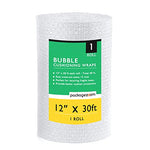You have no items in your shopping cart.
Are you a business owner concerned about the proper management of waste generated by your commercial establishment? Look no further! In this comprehensive guide, we will explore effective strategies for commercial waste collection, ensuring that you maintain a clean and sustainable environment while adhering to regulatory requirements. With the increasing focus on environmental conservation and waste reduction, it is crucial for businesses to adopt responsible waste management practices. So let's dive in and discover how you can optimize your commercial waste collection processes for a greener future.
Why is Commercial Waste Collection Important?
Commercial waste collection plays a pivotal role in maintaining a healthy and sustainable environment. By implementing effective waste management practices, businesses can:
-
Minimize Environmental Impact: Proper disposal of commercial waste prevents pollutants from entering the ecosystem, reducing the risk of soil, air, and water contamination.
-
Comply with Legal Regulations: Many countries have stringent regulations in place regarding waste management. By ensuring compliance, businesses avoid legal penalties and contribute to a cleaner society.
-
Preserve Resources: Recycling and reusing waste materials conserves natural resources and reduces the need for virgin materials, contributing to a circular economy.
-
Enhance Corporate Image: Demonstrating a commitment to sustainable practices enhances a business's reputation and attracts environmentally conscious customers.
-
Improve Cost-Efficiency: Implementing efficient waste management strategies can lead to cost savings through reduced waste disposal fees and increased resource recovery.
Now that we understand the significance of commercial waste collection, let's delve into practical approaches that businesses can adopt to streamline their waste management processes.
1. Perform a Waste Audit
Before devising a waste management plan, it is essential to conduct a waste audit to assess the types and quantities of waste generated by your business. This audit will provide valuable insights into your waste production patterns and help identify areas for improvement. Consider the following steps:
-
Categorize Waste: Classify waste into categories such as paper, plastic, glass, metal, and organic waste. This classification will aid in designing appropriate collection and recycling methods.
-
Weigh and Record Waste: Measure the weight of each waste category and maintain records for future reference. This data will assist in setting waste reduction targets and monitoring progress.
-
Analyze Waste Generation Sources: Identify the departments or areas within your business that generate the most waste. This analysis will enable targeted waste reduction strategies.
-
Identify Opportunities for Recycling: Determine which waste materials can be recycled and explore potential recycling partners or facilities in your area.
2. Implement Source Separation
Source separation is a fundamental practice that involves separating different types of waste at the point of generation. This approach makes it easier to recycle specific materials, reduces contamination, and maximizes resource recovery. Consider the following steps for effective source separation:
-
Provide Clear Instructions: Display clear signage and provide easily accessible color-coded bins or containers for different waste streams, such as paper, plastic, and glass.
-
Educate Employees: Conduct training sessions to educate your employees about the importance of source separation and how to correctly segregate waste materials.
-
Appoint Waste Management Champions: Designate waste management champions within your organization who will take the lead in ensuring proper source separation practices are followed.
-
Regularly Monitor and Update Systems: Regularly assess the effectiveness of your source separation systems and make necessary adjustments based on feedback and evolving waste streams.
By implementing source separation, you can significantly improve the quality and value of recyclable materials, reducing the amount of waste that ends up in landfills.
3. Optimize Waste Collection and Storage
Efficient waste collection and storage are crucial components of an effective waste management system. By implementing the following strategies, businesses can streamline their waste collection processes:
-
Establish Collection Schedule: Determine a regular waste collection schedule based on your business's waste production volume and type. This will prevent waste from accumulating and causing hygiene or safety issues.
-
Choose Suitable Containers: Select appropriate containers or bins for each waste category, considering factors such as size, durability, and ease of handling. Ensure that containers are labeled clearly.
-
Ensure Adequate Signage: Display visible signage indicating the type of waste accepted in each container. This will minimize contamination and promote proper waste disposal.
-
Implement Secure Storage: If your business generates hazardous waste, ensure proper storage facilities are in place to prevent leaks or spills that could harm the environment or human health.
-
Encourage Responsible Use: Educate employees about responsible waste disposal practices, emphasizing the importance of using designated containers and reporting any potential issues promptly.
By optimizing waste collection and storage, businesses can maintain a clean and organized environment, reducing the risk of accidents or environmental harm.
4. Engage with Waste Management Service Providers
In many cases, businesses rely on waste management service providers for the collection, transportation, and disposal of their commercial waste. It is crucial to establish effective partnerships with reliable and responsible service providers. Consider the following tips:
-
Research Service Providers: Conduct thorough research to identify waste management companies that prioritize sustainability, recycling, and adherence to environmental regulations.
-
Request Service Proposals: Obtain detailed service proposals from multiple providers, comparing their pricing, services offered, recycling capabilities, and environmental certifications.
-
Check Compliance and Certifications: Ensure that the selected waste management service providers comply with all relevant environmental regulations and possess necessary certifications.
-
Communicate Expectations Clearly: Clearly communicate your waste management goals and requirements to the service provider, ensuring they align with your sustainability objectives.
-
Establish a Feedback Mechanism: Regularly communicate and provide feedback to your waste management service provider, discussing any concerns, suggestions, or opportunities for improvement.
By fostering strong relationships with waste management service providers, businesses can ensure efficient and responsible handling of their commercial waste.
Frequently Asked Questions (FAQs)
-
Q: What is commercial waste collection? A: Commercial waste collection refers to the systematic collection and disposal of waste generated by businesses, organizations, and institutions.
-
Q: Why should businesses prioritize commercial waste collection? A: Prioritizing commercial waste collection enables businesses to minimize environmental impact, comply with legal regulations, preserve resources, enhance their corporate image, and improve cost-efficiency.
-
Q: How can businesses optimize waste collection processes? A: Businesses can optimize waste collection processes by performing waste audits, implementing source separation, optimizing waste storage, and engaging with reliable waste management service providers.
-
Q: What are the benefits of source separation? A: Source separation allows for easier recycling, reduces contamination, and maximizes resource recovery, contributing to a more sustainable waste management system.
-
Q: How can businesses choose the right waste management service provider? A: Businesses can choose the right waste management service provider by researching available options, requesting service proposals, checking compliance and certifications, and establishing clear communication channels.
-
Q: How often should waste collection occur? A: The frequency of waste collection depends on the waste production volume and type of business. Establish a regular collection schedule to prevent waste accumulation.
Conclusion
Effective commercial waste collection is a vital component of responsible business practices. By implementing strategies such as waste audits, source separation, optimized collection and storage, and partnering with reliable waste management service providers, businesses can contribute to a cleaner environment while meeting regulatory requirements. Remember, adopting sustainable waste management practices not only benefits the planet but also enhances your corporate image and cost-efficiency.








